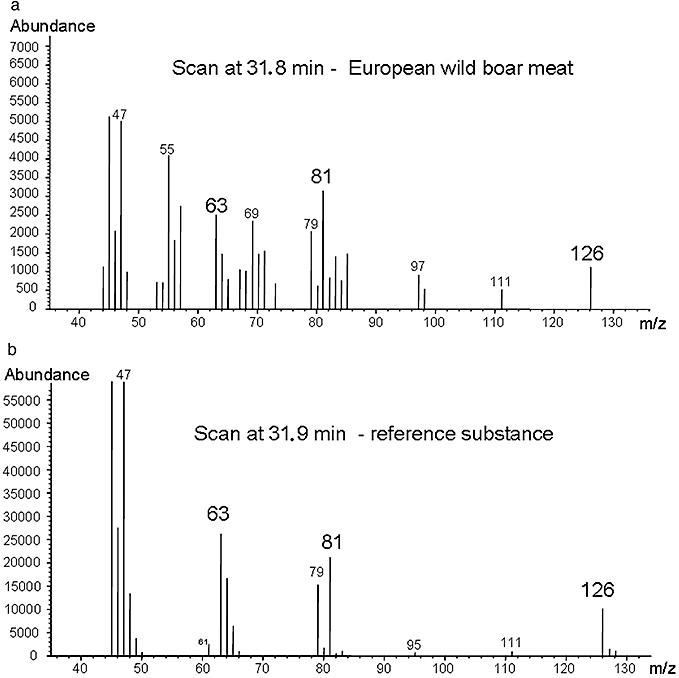A COMPARISON OF THE VOLATILE PROFILES OF FRYING EUROPEAN AND AUSTRALIAN WILD BOAR MEAT WITH INDUSTRIAL GENOTYPE PORK BY DYNAMIC HEADSPACE-GC/MS ANALYSIS
Abstract
ABSTRACT
Volatiles that arise from frying meat of European (sus scrofa scrofa) and Australian wild boars and domestic pigs (sus scrofa domestica) were freed of vapor and led to a Tenax (Alltech GmbH, Unterhaching, Germany) trap where they were absorbed. Elution with diethyl ether followed and after concentrating, a 200-µL volatiles extract was obtained. Separation of compounds via gas chromatography was performed on a highly polar DB-Wax column. More than 50 headspace volatiles could be identified, and their concentrations quantified. Most of the identified volatiles are known to contribute to meat flavor but have not, as yet, been described for wild boar meat aroma. However, S-methyl-methanthiosulfonate is described as a headspace volatile of meat for the first time. No character impact compound of wild boar meat was identified. In fact, results indicate that the distinguished flavor of meat from wild boar and industrial genotype pigs depends on varying amounts of potent aroma volatiles. That phenylacetaldehyde and methional play a crucial role seems possible.
PRACTICAL APPLICATIONS
This manuscript presents, to our best knowledge, the first investigation about volatiles arising from frying wild boar meat. The results enlighten the influence of the breed to aroma-contributing volatiles of pork. Wild boar admittedly tastes different from industrial genotype pork, and is appreciated by many gourmets. This study is a valuable basis for basic and applied science. As classical gas chromatography (GC)/mass spectrometry is chosen as analytical method, the presented data can be compared with many references and easily repeated with common laboratory equipment. The description of the sensory impression of each analyte is delivered in literature by GC in combination with olfactometry, which is an already well-established method for the analysis of aroma-active meat volatiles. The authors want this study to be seen as the first practical access to the aroma research of wild boar meat, and intend to be of use for further investigations in the field of, e.g., food processing or breeding.


 求助内容:
求助内容: 应助结果提醒方式:
应助结果提醒方式:


